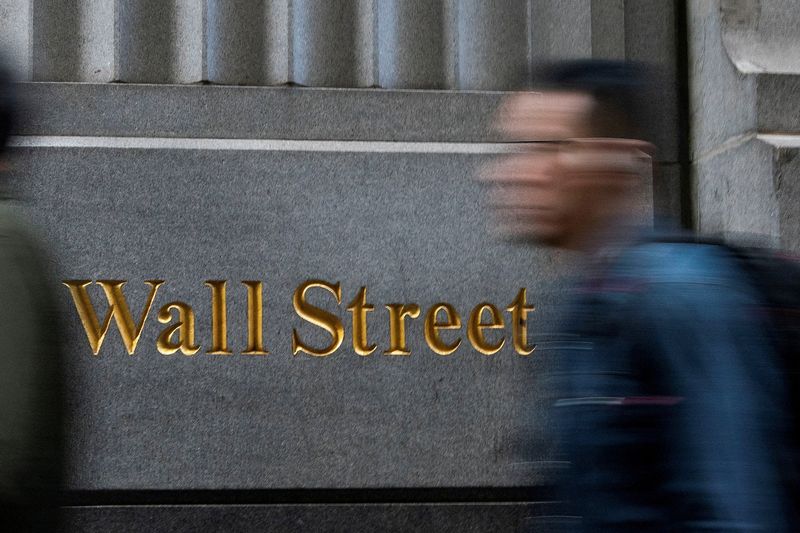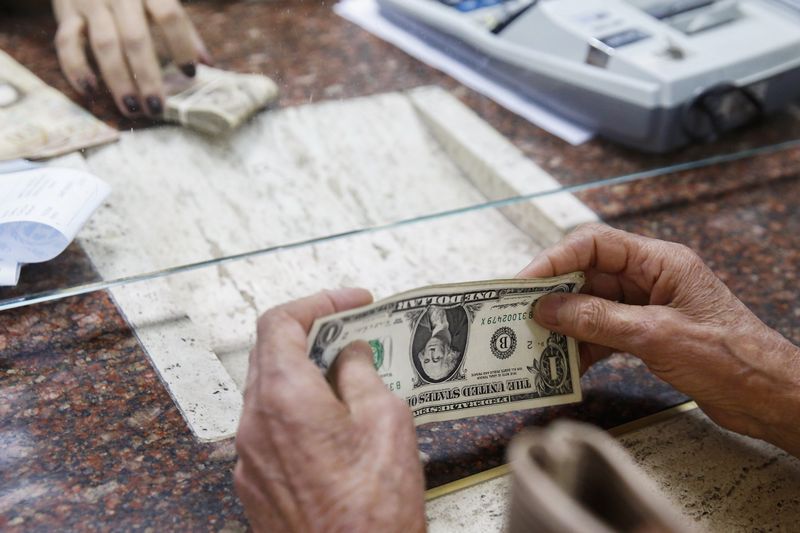By Jamie McGeever
ORLANDO, Florida (Reuters) -While “American exceptionalism” has undoubtedly contributed to Wall Street’s record-breaking returns in recent years, it should not be confused with isolationism.
The U.S. fourth-quarter earnings season that kicks off in earnest this week is a reminder that U.S. companies — as fantastic as some of them may be — are still operating in a global marketplace. Weak economies and subdued demand abroad, combined with a robust dollar, could erode the profitability of U.S. companies, raising questions about whether the U.S. is so exceptional after all.
With the dollar appreciating widely and rapidly, exchange rates will soon erode corporate profitability. The question is how deep.
Analysts at Apollo Global Management (NYSE:) note that more than 41% of companies’ revenues come from abroad. That is the highest since 2013 and not far behind the record high of 43.3% in 2011.
This makes these companies vulnerable on two levels. First, all else being equal, subpar growth in many major economies and trading partners such as China, Canada and Europe should reduce demand for U.S. goods. And second, foreign earnings will now be worth significantly less in dollars than they were a year ago.
The dollar is on a tear. Since the end of September, interest rates have risen by 10% and by 7% on an annual basis. It is now the strongest in more than two years against a basket of G10 currencies, and is trading at multi-year highs against the British pound and Canadian dollar.
There are few signs that this trend will reverse any time soon, as resilient US growth and persistent inflation push Treasury yields higher and force investors to radically reconsider their Fed outlook for 2025. Economists at Bank of America expect no more rate cuts this year and others even suggest the central bank’s next move could be a rate hike. In turn, Goldman Sachs analysts on Friday raised their “stronger for longer” dollar forecasts.
DOLLAR IDIOSYNCRASY
While much of the classic economic playbook has been torn apart since the pandemic, theory still suggests that a 10% annual increase in the dollar should cut the S&P 500’s gains by about 3%, according to BofA. Currently, estimates point to headline earnings per share growth of 9.5% for the fourth quarter, and 14% for calendar years 2025, according to LSEG I/B/E/S.
But fourth-quarter sales growth is estimated at just 4.1%, a relatively slow pace partly due to the exchange rate.
Sales figures tend to decline during periods of strong dollar compared to periods of weak dollar, say stock analysts at Goldman Sachs. So we can reasonably expect that the share of companies that beat consensus sales expectations this quarter will be lower than the 42% that did so in the previous period, when the dollar’s annual rate of appreciation was just 2%.
But while the dollar’s strength is likely to be a factor in many CEOs and CFOs’ minds this earnings season, its impact on U.S. profits could be more “idiosyncratic” than widespread, according to Morgan Stanley (NYSE:)Mike Wilson.
He has noted that the stocks of companies with “relatively low exposure to foreign sales and low sensitivity to a stronger dollar from an earnings per share perspective” have started to outperform since the dollar started rising in October.
He characterizes “low” foreign exposure as companies that derive less than 15% of their revenues from abroad, giving them “minimal” sensitivity to the dollar exchange rate. Some of the big names in this camp are United Healthcare, T-Mobile and Home Depot (NYSE:), while PepsiCo (NASDAQ:) is a number of large companies that generate more than 15% of their revenues from abroad, IBM (NYSE:) and Oracle (NYSE:).

The strength of the dollar is not yet at a level that truly threatens the competitiveness and profitability of corporate America. But if it continues, this earnings season could be a taste of things to come.
(The views expressed here are those of the author, a columnist for Reuters.)
(by Jamie McGeever; editing by Andrea Ricci)


